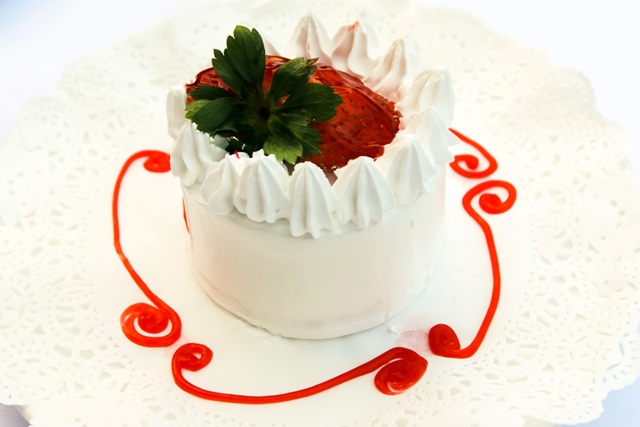
It seems like the holiday party is not quite over yet for diabetics. After last year’s success of the book, “Delicious, Delightful Dishes for People with Diabetes,” the Philippine Association for the Study of Overweight and Obesity (Pasoo) and AstraZeneca now release “Delectable Treats for Sweet-Toothed Diabetics,” a 22-page recipe book of desserts for those suffering from the ailment.
The book, anchored on calorie- and portion-size control, features the creations of pastry chef Jackie “Jac” Laudico.
Chef Jac’s simplified method of presenting recipes belies the scrupulous attention to detail and hard work she puts into each treat.
She has 17 sugar-free, low-fat recipes that she hopes can change the widely unfavorable perception of sugar-free desserts.
For any dessert to be safe for diabetics, chef Jac made sure they were not only low in sugar, but also in fat. Calories also needed to be trimmed down, she said, since obesity and diabetes often go hand-in-hand.
Her Flourless Sugar-Free Chocolate Cake, for example, has only 208 calories per serving, 15.9 grams of fat, 4 g sugar, and 17.7 carbs. A regular flourless chocolate cake could easily double those figures, she said.
Carbohydrates may seem harmless to the uninformed, but this preferred source of energy is loaded with sugar. Once it is consumed, the body breaks it down into glucose (sugar) which goes straight into the bloodstream. The glucose is then converted to energy, with the help of insulin that transports it to the muscles.
But in diabetics, where there is insulin-resistance, the blood glucose cannot penetrate into the muscles so that there is elevated sugar in the blood.
This effect is not only from consumption of carbs. Fat and sugar have the same effect.
Chef Jac learned that developing sugar-free desserts was not a simple as replacing regular sugar with a sugar substitute. She also needed to look out for the calorie and fat content.
“And those are the secrets to making desserts—sugar and fat. Aside from making sure the texture is right, I also have to make sure the end product isn’t too tiny. It needs to be in a decent enough size, not something that will cause food deprivation,” she said.
Imposing restrictions on ingredients is not something entirely new to chef Jac. She has developed sugar-free desserts for special clients and events. The nutrition analysis at the end of each presentation was new to her, though.
With all the restrictions, how was she able to make the desserts that were enjoyable? “Trial and error,” she said. “I experimented with different brands of sugar substitute. I learned which ones made the cake dry, which ones were good for baking and best for cold desserts. I also learned that fruits lessen the aftertaste of sugar substitutes.”
One of the problems she observed among people on a special diet, she said, is their tendency to feel deprived. Chef Jac thinks that if more options are given dieters, the less likely they are to feel this way. Once they reach a certain level of satisfaction, they will be able to manage their health conditions better.
“I learned that it’s a matter of choosing the right ingredients, and portion control—portions that are okay in size,” she said.
In the case of desserts, chef Jac means acceptable portion sizes that keep calories and fat at a minimum.
Baking, as anyone who has dabbled in it knows, requires precision. To make sure her recipes are user-friendly, chef Jac, who heads the food and beverage operations of the family business, consulted with her pastry chefs. They also taste-tested each dessert.
From 20 desserts, she trimmed down the list to 17, going for popularity and variety. One of the final tests, she said, was whether or not the interns could do her recipes easily.
“If those with the least experience can bake it, it’s quite safe to assume someone at home who isn’t a pastry chef can do it,” chef Jac said.
She trained under French pastry chefs Eric Perez and Jean Francois Arnaud, as well as World Boulangerie Champion Chef Peter Yuen and Chef Jean Marc of the Callebaut Chocolate Academy.
She advises homemakers to start with simpler, easy recipes, like mousses and cookies, before taking on something challenging like Angel Food Cake.
“I tried to make the recipe step-by-step, so start with something you’re confident with,” she said.
Process
An experienced baker, for example, instinctively knows which goes into the mixer first.
“An experienced baker will mix sugar and butter first before other ingredients. In baking, you just can’t mix everything at once. There’s a process you need to follow, or the result will not be what you expect,” she said.
The book contains recipes for cakes, cold desserts and cookies. Chef Jac creates the recipes while the nutritionists set the parameters.
“This unique cookbook shows that sweets, when prepared appropriately and consumed judiciously, can be enjoyed even by people with diabetes,” said Dr. Roberto Mirasol, Pasoo president.
“Delectable Treats for Sweet-Toothed Diabetics” also contains a Diabasics page that weighs in on the myths and facts about carbs, a simplified glycemic index guide, the lowdown on sucrose vs. fructose, and artificial sweeteners.
It is distributed for free to patients with Type 2 diabetes through the Pasoo office. For inquiries, call tel. no. 6321533 and 3599268. To learn more about the cookbooks for diabetics, visit the Pasoo website at obesity.org.ph/v4/.